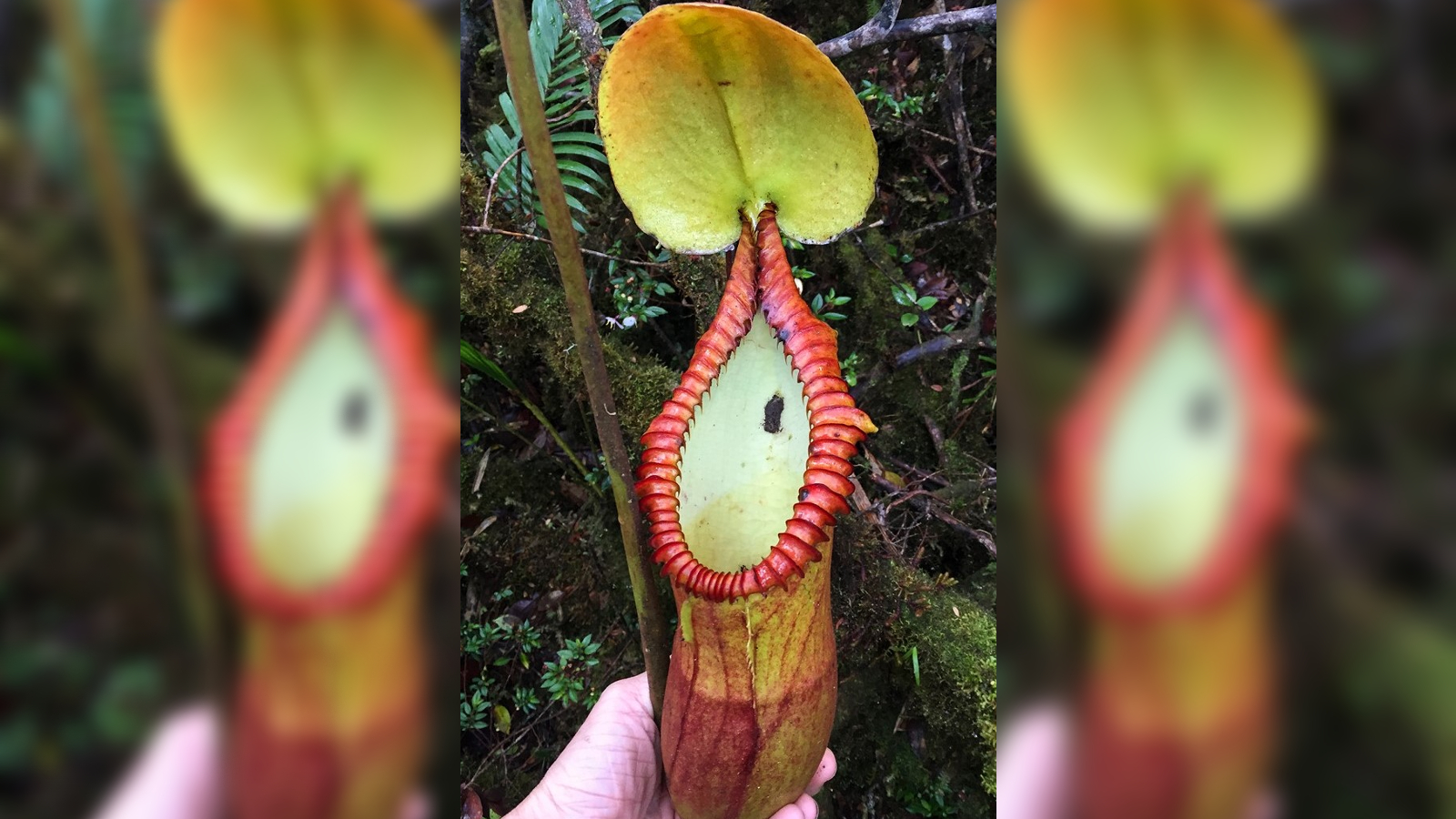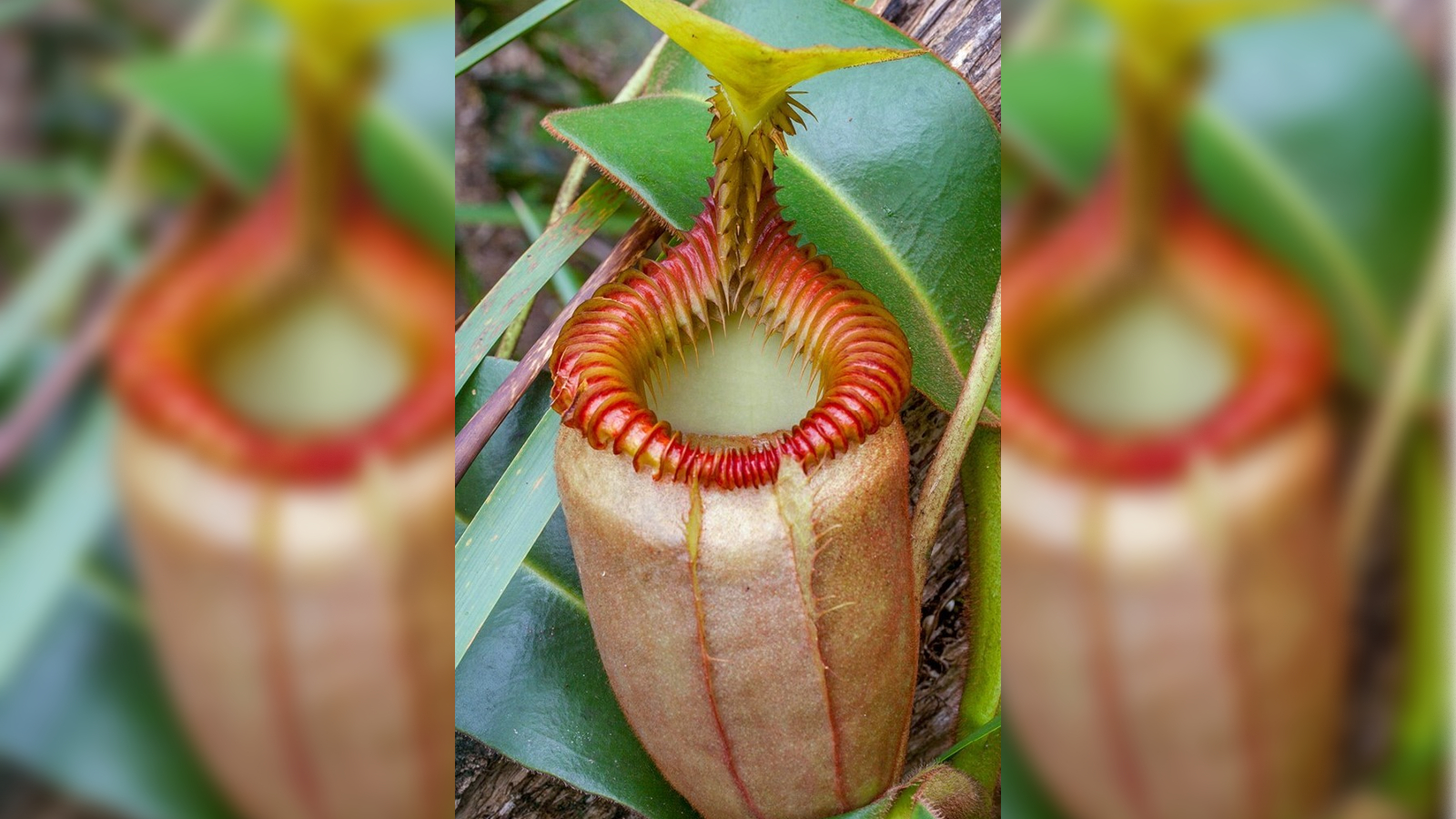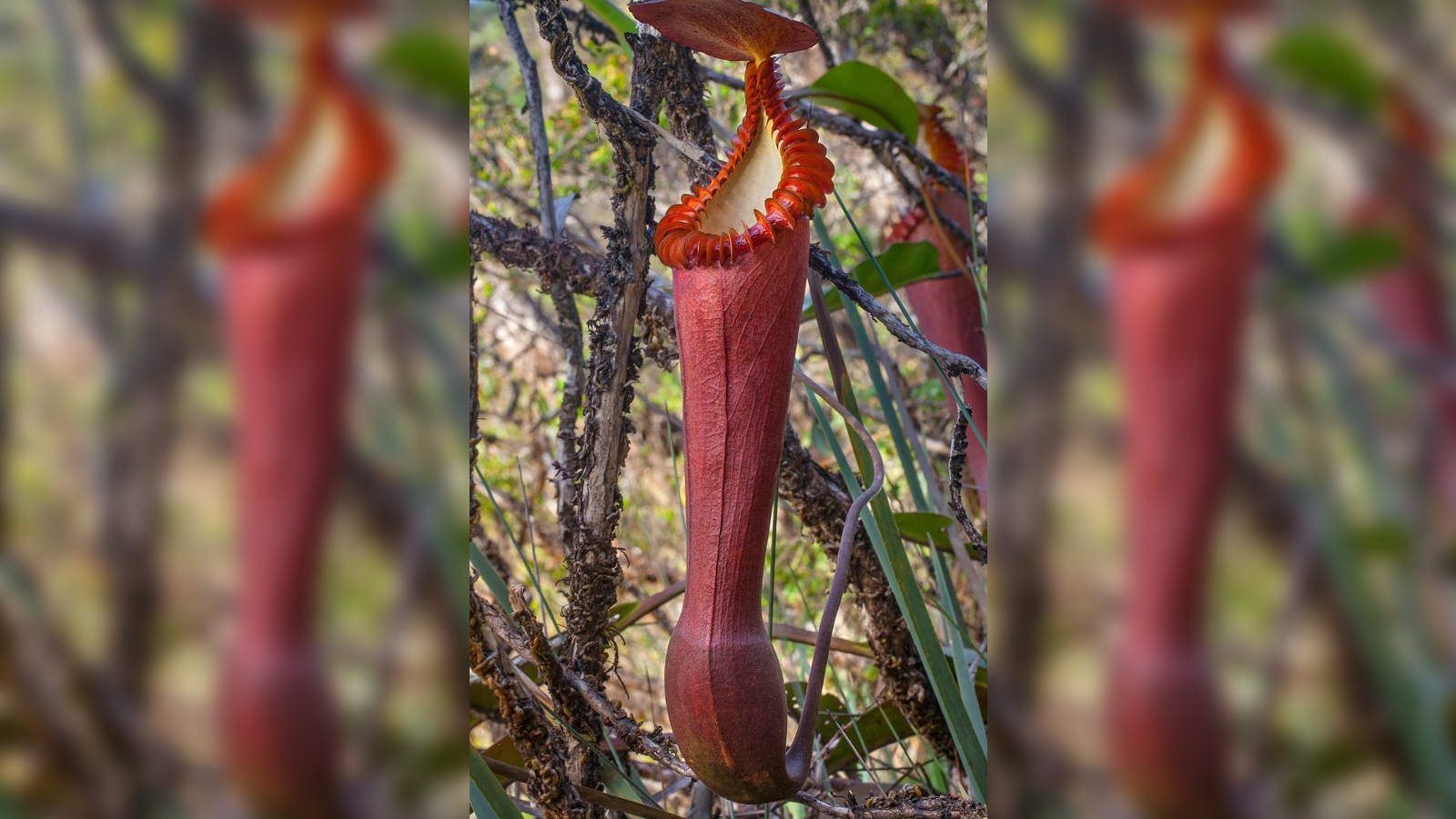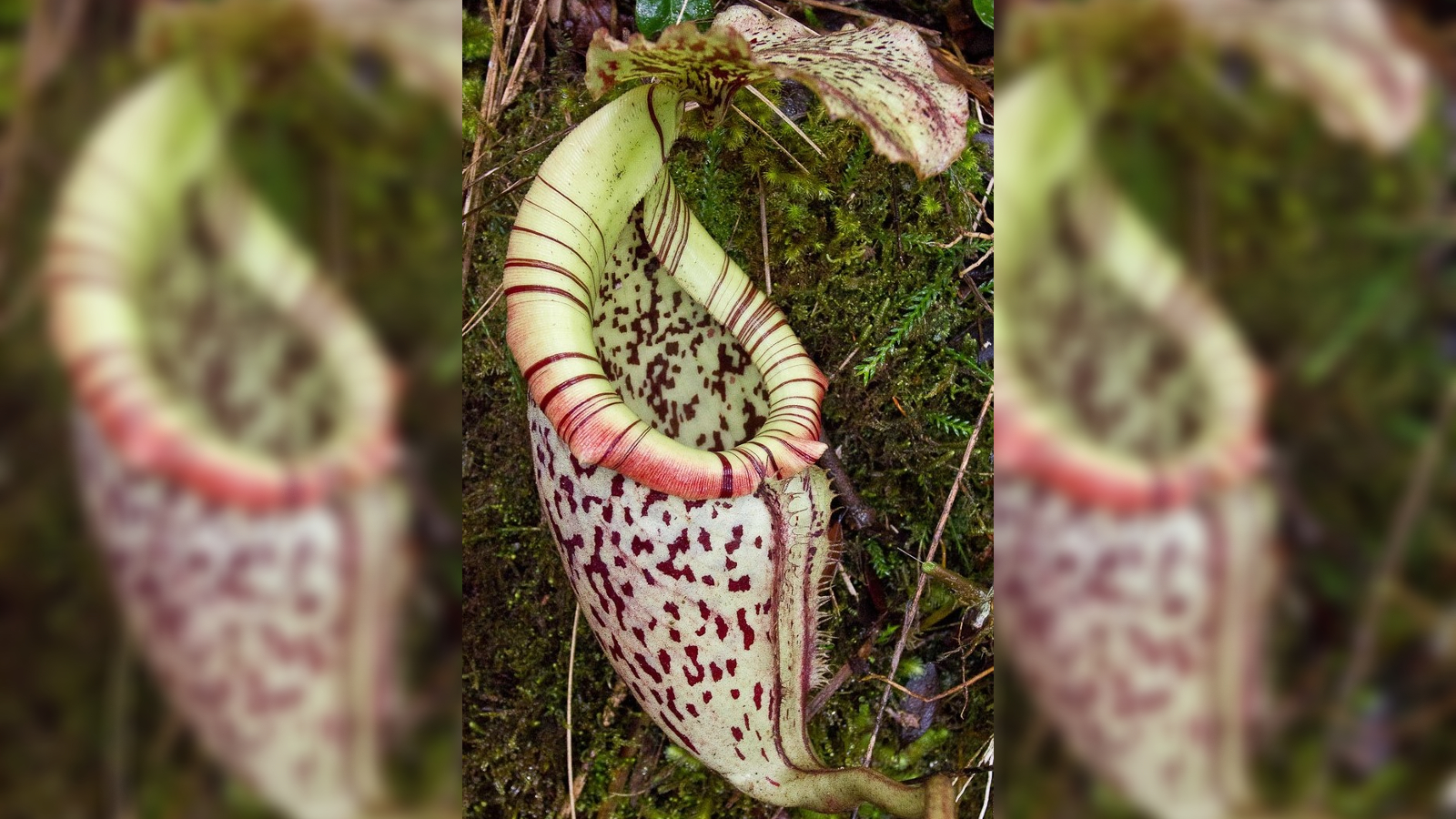Some carnivorous plants evolved to eat poop instead of bugs. And they're better off for it.
Former bug-eating plants, which evolved to feed on animal droppings instead, have a more nutritious diet than their carnivorous cousins, a new study finds.

A group of former carnivorous plants have given up catching creepy crawlies and instead feed on animal poop. And it turns out these living toilets get more nutrients from their new diet than their insect-eating cousins, a new study shows.
Tropical pitcher plants from the genus Nepenthes are carnivorous plants with large, fluid-filled tubes that they use to trap a wide array of prey, including insects such as ants, and arachnids like spiders and scorpions, as well as occasionally larger creatures like frogs or small rodents. The plants' animal diets provide them with additional nutrients — primarily nitrogen, as well as phosphorus and carbon — which helps supplement their growth in nutrient-deficient soils.
But a small group of pitcher plants living on the island of Borneo in Malaysia have taken things to the next level by developing a taste for animal droppings. This dietary switch was first discovered in 2009, when a study published in the journal Biology Letters revealed that mountain-dwelling pitcher plants (Nepenthes lowii) were frequently dining on feces left behind by tree shrews (Tupaia montana). Subsequent studies found more of these plants, which can also feed on droppings from rodents, birds and bats. However, until now, nobody had tested how nutritious their poop-based diet is compared with the insect-heavy diets of other pitcher plants.
In a study published Oct. 28, 2022 in the journal Annals of Botany, researchers compared tissue samples from six species and four hybrids of poop-devouring pitchers from Borneo's mountains with closely related carnivorous species that live at lower altitudes.
"We found that nitrogen capture is more than two times greater in species that capture mammal droppings than in other Nepenthes," study co-author Alastair Robinson, a botanist at Royal Botanic Gardens Victoria in Australia, said in a statement released Jan. 20. Bird droppings provided slightly less nitrogen to the plants but were still more nutritious than a carnivorous diet, he added.
Related: Stop picking carnivorous penis plants, Cambodian environmental officials plead



Carnivorous pitcher plants use sweet-smelling nectar to lure in potential prey, which then fall into the tubular traps after slipping on the plants smooth surfaces. The poop-eating versions also lure in animals with their sugary syrups, but instead of tricking their targets, these plants allow the animals to feed on the nectar. As the animals take time consuming their sugary snack, they often defecate directly into the pitchers' tubes.
Sign up for the Live Science daily newsletter now
Get the world’s most fascinating discoveries delivered straight to your inbox.
The evolution from traps to toilets was likely triggered because there are fewer insects at higher altitudes, researchers wrote in the paper.
"Insect prey is scarce on tropical peaks above 2,200 meters [7,218 feet], so these plants maximize nutritional returns by collecting and retaining fewer, higher-value nitrogen sources," such as animal droppings, Robinson said.
The results show that the higher up the mountain a pitcher plant resides, the more selective and resourceful they must be with their diet to obtain the nutrients they need, the team wrote.

Harry is a U.K.-based senior staff writer at Live Science. He studied marine biology at the University of Exeter before training to become a journalist. He covers a wide range of topics including space exploration, planetary science, space weather, climate change, animal behavior and paleontology. His recent work on the solar maximum won "best space submission" at the 2024 Aerospace Media Awards and was shortlisted in the "top scoop" category at the NCTJ Awards for Excellence in 2023. He also writes Live Science's weekly Earth from space series.










